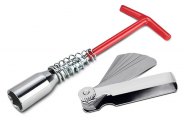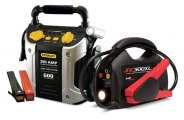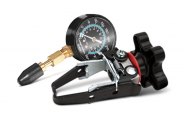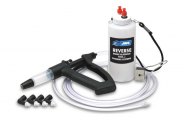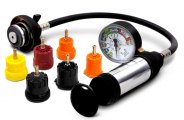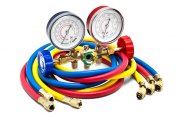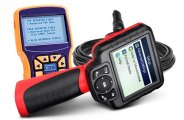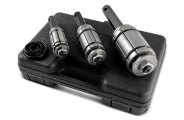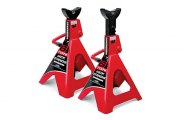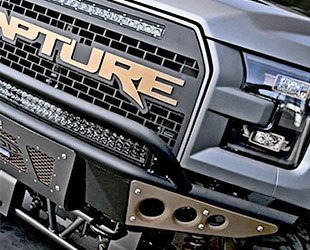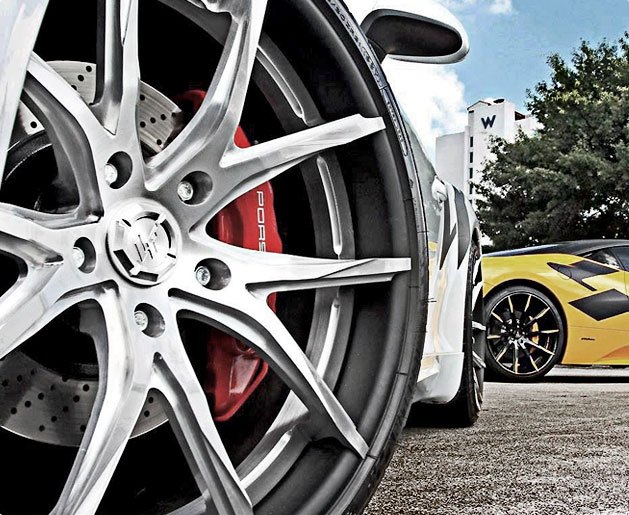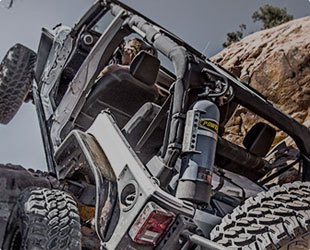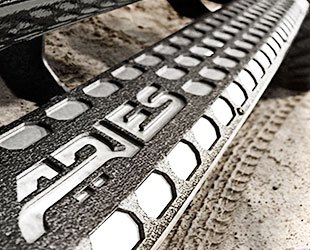Car Parts & Accessories

 Suspension
Suspension Brakes
Brakes Exhaust
Exhaust Engine
Engine Air Intake
Air Intake A/C & Heating
A/C & Heating Driveline & Axles
Driveline & Axles Engine Cooling
Engine Cooling Steering
Steering Fuel Delivery
Fuel Delivery Transmission
Transmission Ignition
Ignition Starting & Charging
Starting & Charging Emission Control
Emission Control Electrical
Electrical Performance Chips
Performance Chips Turbo & Superchargers
Turbo & Superchargers Wipers & Washers
Wipers & Washers Oils, Fluids, Lubricants
Oils, Fluids, Lubricants Power Adders
Power Adders Repair Manuals
Repair Manuals Racing Gear
Racing Gear
 Running Boards
Running Boards Custom Grilles
Custom Grilles Chrome Trim
Chrome Trim Body Kits
Body Kits Off-Road Bumpers
Off-Road Bumpers Bed Accessories
Bed Accessories Grille Guards
Grille Guards Towing & Hitches
Towing & Hitches Headlights
Headlights Tail Lights
Tail Lights Tonneau Covers
Tonneau Covers Spoilers
Spoilers Wind Deflectors
Wind Deflectors Custom Hoods
Custom Hoods Roof Racks
Roof Racks Car Covers
Car Covers Fender Flares
Fender Flares Mirrors
Mirrors Bug Deflectors
Bug Deflectors Car Bras
Car Bras License Plates & Frames
License Plates & Frames Vertical Doors
Vertical Doors Light Covers
Light Covers Winches
Winches Bike Racks
Bike Racks Wiper Blades
Wiper Blades Mud Flaps
Mud Flaps Emblems & Logos
Emblems & Logos Sunroof Visors
Sunroof Visors Armor & Protection
Armor & Protection Car Wraps
Car Wraps Car Tents
Car Tents Soft Tops & Hard Tops
Soft Tops & Hard Tops Commercial Van Equipment
Commercial Van Equipment Spare Tire Covers & Carriers
Spare Tire Covers & Carriers Snow Plows
Snow Plows Custom Horns
Custom Horns Auto Detailing
Auto Detailing
 Installation Parts
Installation Parts Stereos
Stereos Speakers
Speakers Amplifiers
Amplifiers Subwoofers
Subwoofers Equalizers & Processors
Equalizers & Processors Batteries & Power
Batteries & Power Video
Video Radar Detectors
Radar Detectors Cameras & Driver Safety
Cameras & Driver Safety Alarms & Remote Start
Alarms & Remote Start GPS Systems
GPS Systems CB Radios & Components
CB Radios & Components Antennas & Components
Antennas & Components Mounts & Chargers
Mounts & Chargers iPhone & Android Integration
iPhone & Android Integration Bluetooth
Bluetooth Action Cameras & Accessories
Action Cameras & Accessories
 Oil Change Tools
Oil Change Tools Spark Plug & Ignition Tools
Spark Plug & Ignition Tools Wheel & Tire Service Tools
Wheel & Tire Service Tools Battery Chargers & Jump Starters
Battery Chargers & Jump Starters Engine Service Tools
Engine Service Tools Brake Service Tools
Brake Service Tools Suspension & Steering Service Tools
Suspension & Steering Service Tools Fuel System Service
Fuel System Service Transmission & Drivetrain Service Tools
Transmission & Drivetrain Service Tools Pullers & Installers
Pullers & Installers Cooling System Service Tools
Cooling System Service Tools A/C Tools & Equipment
A/C Tools & Equipment Electrical System Tools
Electrical System Tools Diagnostic & Testing Tools
Diagnostic & Testing Tools Exhaust System Service Tools
Exhaust System Service Tools Auto Glass Tools
Auto Glass Tools Lockout Kits
Lockout Kits Jacks
Jacks Automotive Lifts & Stands
Automotive Lifts & Stands Dollies & Movers
Dollies & Movers Creepers
Creepers Service Carts
Service Carts Vehicle & Parts Protection
Vehicle & Parts Protection Auto Detailing
Auto Detailing Repair Manuals
Repair Manuals Automotive Paint
Automotive Paint Dent Repair Tools
Dent Repair Tools EV Charging
EV Charging Key Cutting Machines
Key Cutting Machines
 How to Choose the Best Car Cover?
How to Choose the Best Car Cover?
Perform preventive maintenance and make timely repairs, increase horsepower and improve handling and braking for better overall performance, and give your car, truck, or SUV the unique appearance that will have heads turning wherever you roll. You can do it all with parts and accessories from CARiD. Unlike some on-line aftermarket vendors that have repair parts but can’t help you dress up your ride, or sell exterior accessories but don’t have the wheels and tires you need to complete the look, we’re the one-stop destination for all your automotive essentials. No matter what you want to do with your vehicle or where you get your kicks – on the street, at the track, or off-road – you’ll find quality, name brand parts and accessories on our digital shelves to turn your automotive dreams into reality.
Improving your vehicle’s functionality and aesthetic appeal will make driving and the whole ownership experience more enjoyable, and we have products for every taste and budget. Protect your interior and boost comfort and ambiance with custom logo floor mats, custom seat covers, steering wheel cover and shift knob, personalize your cabin with a wood dash kit and custom gauges, and make any trip more enjoyable with a digital media receiver and full range speakers. Shield your truck bed from damage with a bed mat or liner and sleek, low profile tonneau cover. Enhance your haulers cargo carrying and towing capabilities with bed organizers, a bed extender, tie-down anchors and straps, trailer hitches & towing accessories, and more. And you can get a boost into the cabin and the bed with a set of running boards or side steps, bed steps & tailgate steps, and hitch steps.
Car buffs are proud of what they drive, but few are satisfied with factory stock appearance. There’s no better way to put a personal stamp on your ride than with a custom look and our range of exterior accessories is packed with the products to make it happen. Our selection includes chrome trim, custom grilles, and a huge assortment of body mods. From bumper valances, rear spoilers, custom hoods and complete body kits for road burners, to off-road bumpers, grille guards, body armor and fender flares guaranteed to boost the toughness factor on 4x4s, we have what you need to create a distinctive machine. LED lighting is the hottest visual appeal booster, plus you get better visibility for safer driving. We have LED headlights, tail lights, halo rings, off-road light bars and more, including custom LED light kits that create a dazzling display you control from your smartphone. Few mods can improve curb appeal and performance like a set of custom wheels and tires, and our selection is unrivaled, but if you’re unsure what will fit your ride our wheel and tire experts are just a phone call away.
No matter how powerful and fast the factory made it, we know you’re not content with OE performance either. Whether you just want a slight power boost and nice rumble or be pressed into the seat and hear a roar when you hit the pedal, our performance parts deliver. From free-flowing cold air intakes and cat-back exhaust systems, to cams, ported heads, and performance programmers, to power adders like superchargers, turbochargers, and nitrous oxide, the only question is how much horsepower do you want to make? Plus, we have a full complement of clutches, torque converters, axles, ring & pinion sets and other performance transmission and driveline parts to get that power to the ground. For handling to match the acceleration go with performance coilovers, sway bars, strut braces, and lowering kits for pavement fun, or lift kits, springs, shocks, and skid plates for off-road adventures. And you can get your machine hauled down safely with drilled and slotted brake rotors, multi-piston calipers, application specific brake pads, and braided steel hoses, or go with a full big brake kit.
Regular vehicle maintenance can prevent unexpected failures and expensive major problems. But there’s no need to waste time trying to find what you need at an auto parts store when we can have the parts required for your maintenance regimen like air, fuel, oil, and cabin air filters, motor oil, antifreeze, spark plugs, and wiper blades delivered right to your door. We also offer all commonly replaced wear parts like timing and drive belts, cooling system hoses, shocks and struts, disc brake pads and rotors, clutch kits, and batteries. We’re your auto service headquarters for repair jobs big and small, from alternator, water pump, and CV-joint halfshaft replacement to engine and transmission overhauls, plus we have the tools, shop supplies and consumables necessary to complete the job. We also have an extensive selection of replacement body parts as well as the car wash, cleaners, wax, wheel & tire care products, and other detailing supplies to maintain your ride’s stunning appearance.
CARiD.com is structured to make shopping easy, with all parts and accessories intuitively organized. Each product category features plenty of useful illustrations, descriptions, menu choices and search options so you can effortlessly find what you’re looking for. Plus, you’ll find links to helpful guides and articles, written by professional technicians and car enthusiasts and filled with timely advice and additional product information, as well as links to product reviews posted by other customers. We’ve also created Specialty Shops stocked with products to satisfy your obsession, vehicle activity or ride of choice. If you’re a diehard sports fan, you’ll find plenty of gear with the logo of your favorite team in Fan Zone. Never have enough camo? We have products in all your favorite patterns in Camo Gear. Prepping for adventures in the dirt? You can make sure you’re properly equipped with a visit to Off-Road World. And we’ve gathered all the vehicle appropriate parts and accessories you’re looking for in our Jeep, Truck, and SUV shops.





